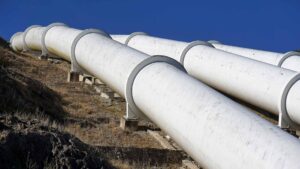The falling cost of renewables is not news to those who have paid attention to analysis from green-focused thin tanks, or groups like Bloomberg New Energy Finance. But it is when a major European utility, with equal exposure to fossil fuels, wind, and hydro, says that onshore wind is the cheapest of any new utility scale technology.
That is the assessment of Portugal’s EDP, which has around 24GW of generation, of which around 8.7GW is in onshore wind.
In a recent presentation to analysts, EDP’s head of renewables Joao Manso Neto presented this slide below, which shows that the levellised cost of electricity of onshore win in Europe is 20 per cent cheaper than gas and one third cheaper than coal. (The figure assumes 25 per cent wind capacity factor).
These estimates are for Europe, but Neto suggested the cost difference is even greater in the US, where recent contracts have been struck between $20/MWh and $40/MWh. That’s despite the so-called shale gas boom, which brought down costs of gas-fired generation for a short period, but still cannot compete with wind.
“It is clear, more and more, that our product (wind energy) is good, not just because it is green, but because it is cheaper,” Neto told the analysts. (You can see the presentation here). He said wind energy is also cheaper than gas in key emerging markets such as Brazil, South Africa, Mexico, and major Asian markets.
Neto admits that the short term outlook in Europe remains challenging because there remains a perception
He might have been referring to the likes of former Queensland Treasurer Keith De Lacy, who in the front page lead for The Australian today said renewables had “no place in a modern society”. And he might have been referring to people like Institute of Public Affairs’ Alan Moran, who insists that that wind energy is “three times” the cost of coal.
Neto says “the less educated” typically refer to the spot price, but this only reflects market dynamics and the level of supply and demand, not the cost of the technology. New build coal is also “three times the market price”.
In Australia, and other similar countries, incumbent generators and those that seek to protect them, are simply trying to stop the introduction of new generation – be it green or brown or black – because it will make older and less efficient coal and gas generator uneconomic. The Minerals Council of Australia makes this clear in its submission to have the renewable energy target dumped.
“Wind is not only competitive, it is prepared to compete,” Neto says. But to do that, it would need an equal playing field, such as the removal of the fossil fuel subsidies that add to half a trillion dollars worldwide. If the world is to decarbonise, and accelerate the withdrawal of polluting power stations, then wind will clearly be a winner.
Bloomberg New Energy Finance said in a note to clients that statistics already show that onshore wind can have a lower cost than gas or coal. The cost of onshore wind is in the range €42–€78/MWh, compered to CCGT (base load gas) at €62–€98/MWh and coal at €75–€90/MWh.
“The conclusion is clear: wind is competitive in many locations,” BNEF says. “The competitiveness of wind is not a new story.”









